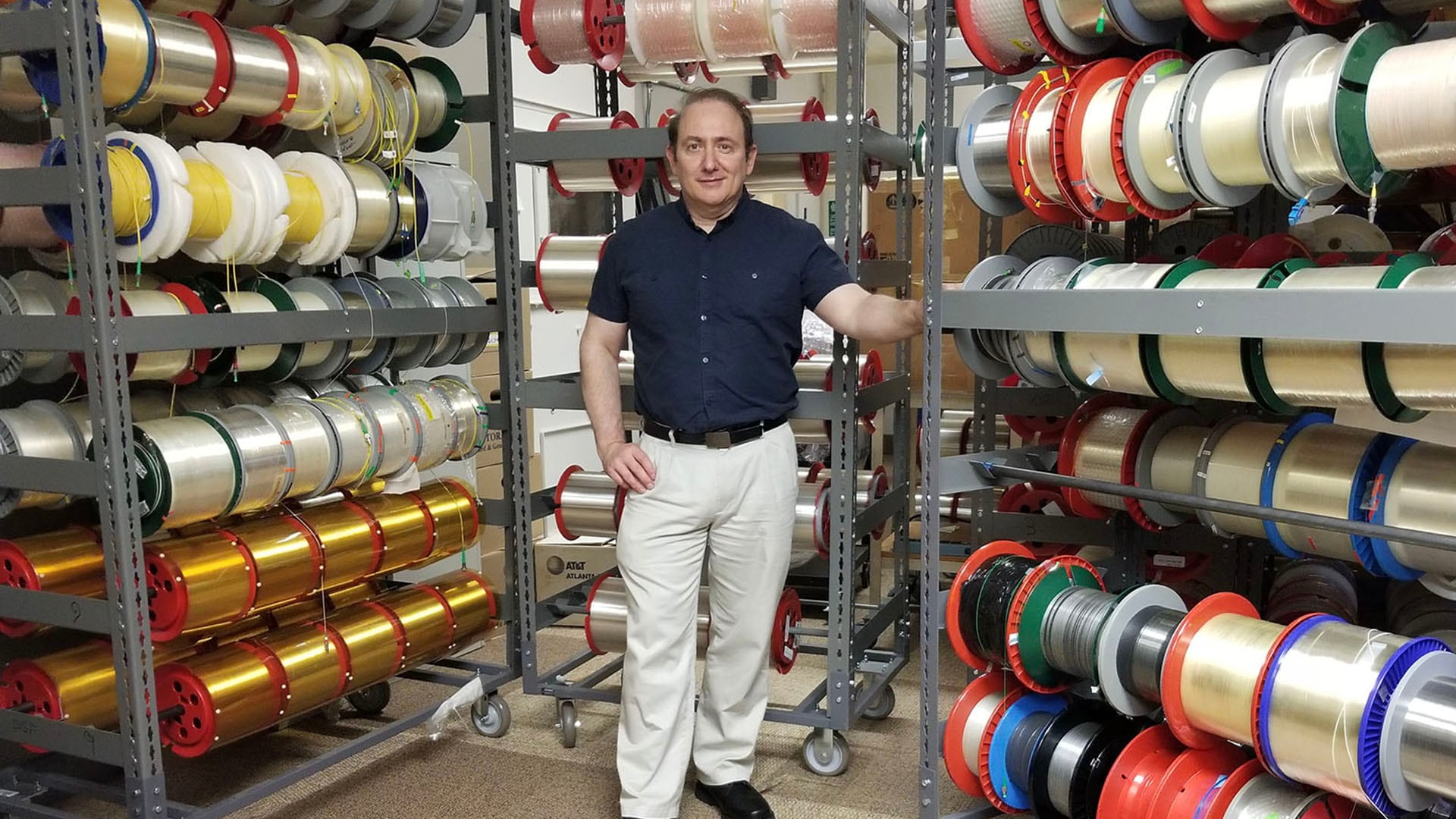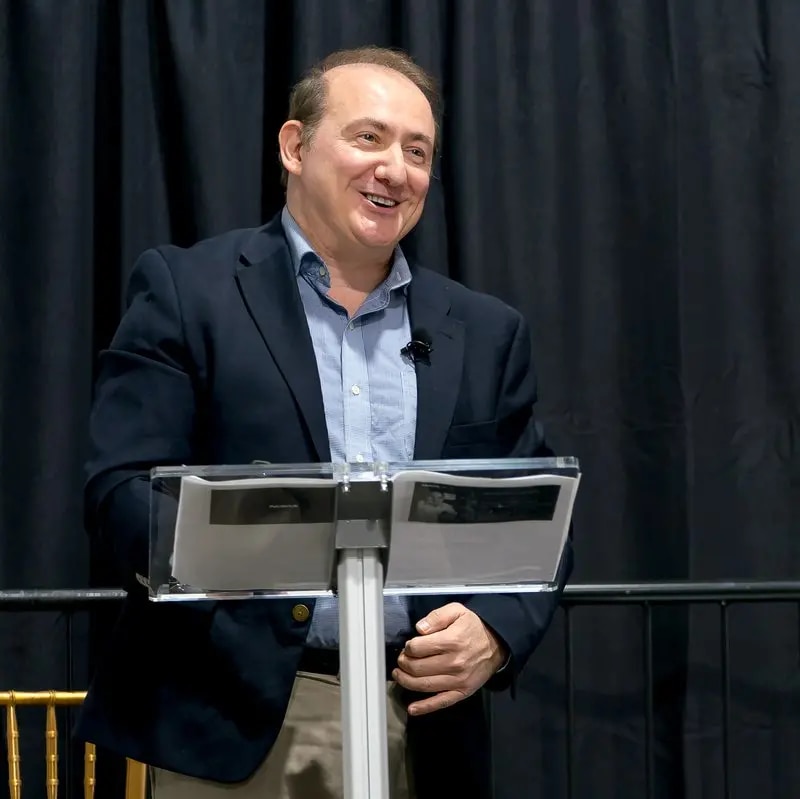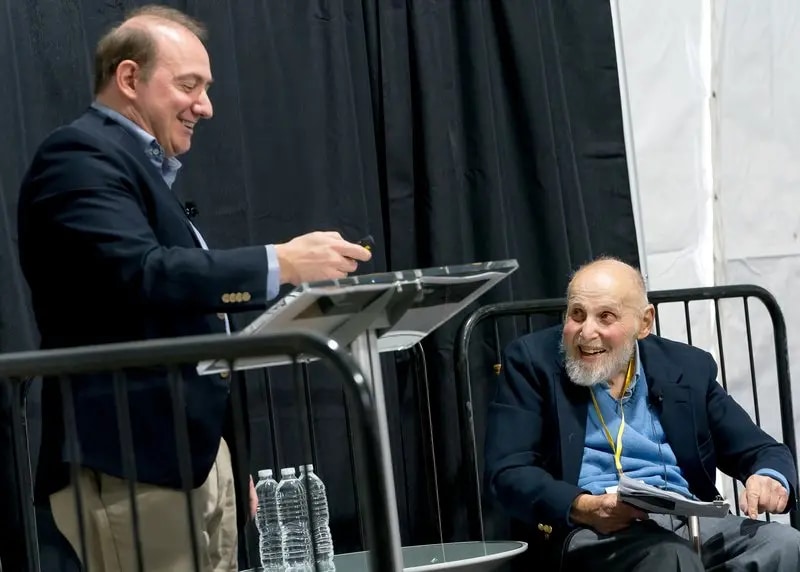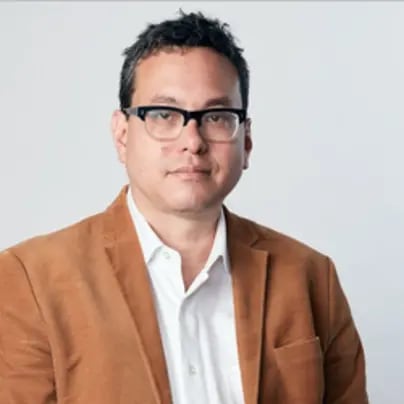A limit within a limit: How René-Jean Essiambre shaped the direction of optical research

If someone were to call you a nonlinear thinker, you would probably take it as a compliment. It implies the ability to come up with ideas and draw conclusions that might not seem obvious to others – to think abstractly about concepts most would approach concretely. Nokia Bell Labs optical researcher René-Jean Essiambre has taken nonlinear thinking to the next level. He’s built a career around thinking nonlinearly about the concept of nonlinearity in optical fibers.
Essiambre defined what is known as the nonlinear Shannon Limit.
To understand the significance of that accomplishment, a little technical context is needed. There is a fundamental limitation to the amount of information that can be sent over any communication channel. This ceiling is known as the Shannon Limit, or Shannon’s Limit, named after Nokia Bell Labs’ most famous mathematician Claude Shannon. Understanding this barrier has guided communication research for decades. Essiambre, however, uncovered and predicted with an unprecedented accuracy a limit within Shannon’s Limit for optical communications networks. That limit within a limit is due to the nonlinear nature of transmission over optical fibers.
In a linear communications system like wireless, if you increase the signal power, you boost capacity, and the more you keep increasing that power, the more you increase the theoretical maximum capacity of the system. But an optical network follows a different path – a nonlinear path. Beyond a certain power level, injecting more power in a fiber does not lead to higher capacities.
“If you have a long fiber link like in the internet backbone, you will observe at higher power levels that the signal is distorted by the other channels around it,” Essiambre said. “At a particular power level, that distortion grows faster than the signal power. That creates a drop in the quality of transmission. At a certain point, you start to lose information faster than you gain it by increasing power. At that power level, you will see no more gains in information. That is the nonlinear Shannon Limit.”
In short, optical fiber is a finicky medium. You simply can’t crank up power levels in optical networks to get better performance.
What Essiambre did was define the nonlinear effects on fiber optic systems in a holistic manner. Essiambre’s nonlinear model set parameters for any optical system, serving as a crucial guide for all future research and development into fiber systems. Research paths that might have been promising were revealed as dead ends, due to the nonlinear limit, while the potential of other research paths was revealed.
“Bell Labs research has a long history of understanding the limit in all of our research,” said Tod Sizer, Head of Optical Systems and Device Research at Nokia Bell Labs. “This informs us. This informs the industry. And it saves us time and effort hitting our heads against the wall by proving that the wall is impenetrable. The fact that we are today, after a productive 30 years of progress, nearing the nonlinear Shannon Limit brings the industry to an inflection point – we can no longer expect to grow communications efficiency to meet communications demand alone, and thus must seek other paths towards addressing the capacity challenge.”
Essiambre’s research is now guiding the communications industry in new directions such as parallelism through space division multiplexing (SDM) and the exploration of wider bandwidth systems. Those innovations are making their way into the optical systems Nokia is building for the future, enabling it to meet our insatiable demand for more capacity. Those technologies will eventually form the foundation of the globe-spanning communications network that will help the world act together.

From groceries to solitons
Essiambre’s education in mathematics began early. Growing up in a small fishing village in the Gaspé Peninsula, Québec, Essiambre’s parents ran a grocery store. By the time he started attending school as a child, his father had taught him how to calculate prices for goods sold at their shop.
Far ahead of the other students at his school, he began teaching himself, studying science and other fields on his own. By high school, he had learned calculus through self-instruction, and he graduated early. “I liked math, physics as well,” Essiambre said. “I was very self-motivated.”
Essiambre matriculated at Université Laval in Québec City, where he found a focus for his love of math and science. But he didn’t choose to study communication or optics. Rather he picked the path of an astrophysicist, studying the distribution of galaxies in the universe and its link to chaos theory, a highly nonlinear theory. But after completing his master’s degree, he had a change of heart. Concerned about the limited number of research positions in the field, he decided to leave astrophysics behind, pursuing a career in optics.
Completing his PhD in 1994, Essiambre left Canada for the Institute of Optics at the University of Rochester, where he took a post-doctorate fellowship under Govind Agrawal, a renowned scientist specializing in nonlinear physics. With Agrawal’s guidance, Essiambre studied solitons, a type of nonlinear wave found in many media, including optical systems. That early research proved to be the foundation for his later discoveries.
In 1997, Essiambre took a job with Bell Labs. He started out working closely with the product groups, trying to build better, higher performance fiber optic systems. But the problem of nonlinearity kept rearing its head.
“The nonlinear parameters of fibers were well known at the time,” he said. “People were trying to fight nonlinearity by changing formats or doing different things to the fiber network, but there was no comprehensive approach that really tried to maximize capacity and capture everything that could be done to combat nonlinear effects.”
Increasingly frustrated, Essiambre decided to tackle the problem himself. He formed a team that included fellow Bell Labs researchers Gerard Foschini (himself renowned for pioneering MIMO) and Gerhard Kramer, combining their expertise in nonlinearity, information theory, mathematics and engineering. Using the signal models the team generated, Essiambre was able to calculate the nonlinear limit for any type of optical transmission in a network. Those findings were published in 2008 in Physical Review Letters and had an immediate impact on the field of optics.
“This gave a limit that was meaningful for people to compare their results to,” Essiambre said.
“For the first time, I could calculate how far away from that limit I was when pursuing something. I could determine exactly how much I could gain by working on a given technology.”
Not only did Essiambre and his colleagues establish the upward boundaries for research in the optical communication field, but Essiambre was also able to quantify and predict many forms of nonlinear distortions within a system. Beforehand most distortions were treated as noise inherent in optical transmission. Essiambre’s model, however, meant some of that distortion could be converted back into capacity. That lead directly to developments in optical compensation technologies like digital back propagation.
“There are essentially two types of distortions, distortions you can predict and distortions you can’t predict,” Essiambre said. “For a given system, if we can’t predict it, we consider it ‘noise’. If we can predict it, then that distortion isn’t noise because we can compensate for it. The question is whether you have access to the right information to undo a given distortion or whether, at a fundamental level, it is prohibited by the laws of physics.”
Befriending Arthur Ashkin

Today, Essiambre continues to research nonlinearity, focusing on advanced systems design and fundamentals of optical communication. But he also finds himself taking on a larger role in the optical research community. He’s active in IEEE and OSA, the Optical Society. He is a fellow in both societies, and next year he will assume the Presidency of the IEEE Photonics Society.
At age 54, Essiambre has become a role model for optical researchers around the globe, but that didn’t stop Essiambre from being inspired by others well into his established career. In 2013, long after he had made his mark in optical science, Essiambre established a close personal friendship with Arthur Ashkin. Even among the giants of Nokia Bell Labs, Ashkin looms particularly large. He invented the optical tweezers, a method for isolating and grabbing individual particles using optical lasers, for which he was awarded the Nobel Prize in Physics in 2018.
Even though Ashkin retired from Bell Labs a few years before Essiambre joined the lab, they became close after the death of a mutual friend in 2013. The two spent countless hours in Ashkin’s home basement where he had built his own lab. Though at first glance their respective areas seemed to have little overlap, it quickly became apparent that decades earlier Ashkin and his colleagues had laid the foundation upon which Essiambre built his nonlinearity research. They also had in common the fact they had set out on different scientific paths before finding their calling in optics – Ashkin as a nuclear physicist and Essiambre as an astrophysicist.
According to Essiambre, what captivated him most about Ashkin was his creative approach to research. “He had so much imagination,” Essiambre said. “He would suggest things to me that looked a little bit far-fetched at first. But after he explained things, I would realize his ideas were remarkably innovative. His imagination was supported by tremendous intuition and sound science. I learned that I should let my imagination go, and not restrain myself.”
Or to put it another way, Ashkin thought nonlinearly, which is something Essiambre could certainly relate to. Their professional and personal relationship grew to the point that Ashkin asked Essiambre to give the most important speech of his life in his place. Due to health reasons, Ashkin couldn’t make the trip to Stockholm in 2018 to deliver his Nobel Lecture. Essiambre dutifully helped prepare the speech, then delivered it in his stead. Ashkin died two years later, leaving a long legacy.
“He had so much enthusiasm, it was contagious,” Essiambre said of Ashkin. “The thing I learned the most from him was how to manage your interests. I learned what to focus on and what is the most important in professional life.” But then he added, “Perhaps I haven’t followed his advice as much as I should have. I may have overly committed time to professional associations. I can hear Art saying, ‘This is time you don’t have for research.’ And he is right. Even though helping the optical community is fulfilling, I plan to scale back after I have fulfilled my current commitments.”
